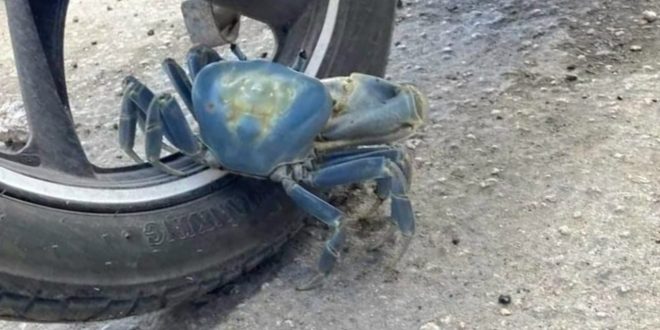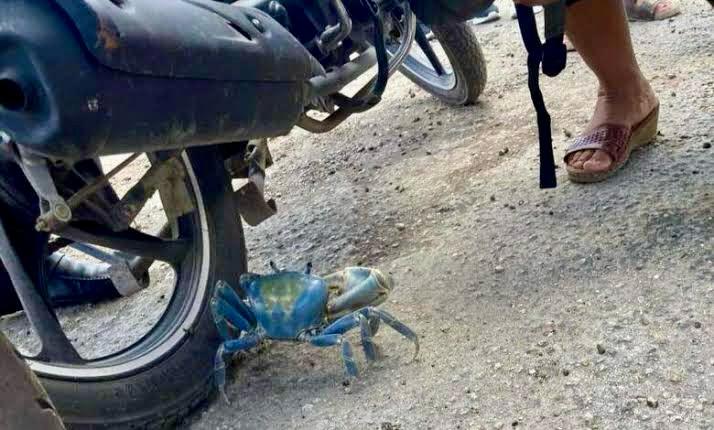The “Va y ven” bus stop, in the cenotes area of 48th and 47th streets in Tizimín, became an unexpected spectacle with the appearance of a blue crab. The presence of this crustacean, native to the Gulf of Mexico and not common in the area, caused astonishment among users of the bus stop, who quickly reported the incident to the emergency number.
According to federal authorities on environmental matters, the blue crab is a crustacean that lives in the coastal area of mangroves, swamps, lagoons, and estuaries. It is considered the largest semi-terrestrial crab in the Gulf of Mexico and one of the most abundant, particularly in the states of Veracruz and Tabasco.

However, its appearance at the bus stop suggested that he may have left the cenote located below the site. This unusual sighting aroused curiosity and surprise among those present since it is not common to see this species outside its natural habitat.
The users of the “Va y ven” observed the blue crab walking among them calmly. This peculiar behavior attracted the attention of everyone, who took it upon themselves to keep the crustacean safe.

The report to the emergency number mobilized local authorities, who arrived at the scene to handle the situation. Wildlife experts were tasked with ensuring the blue crab returned to its habitat safely.
Biologist Julián Escalante indicated that one of the particularities of this species is its coloration since it presents gray, brown, and bluish tones which become more intense with time and age. An adult crab can weigh up to 2.2 pounds and its largest claw can measure up to 4.7 inches long.
TYT Newsroom


